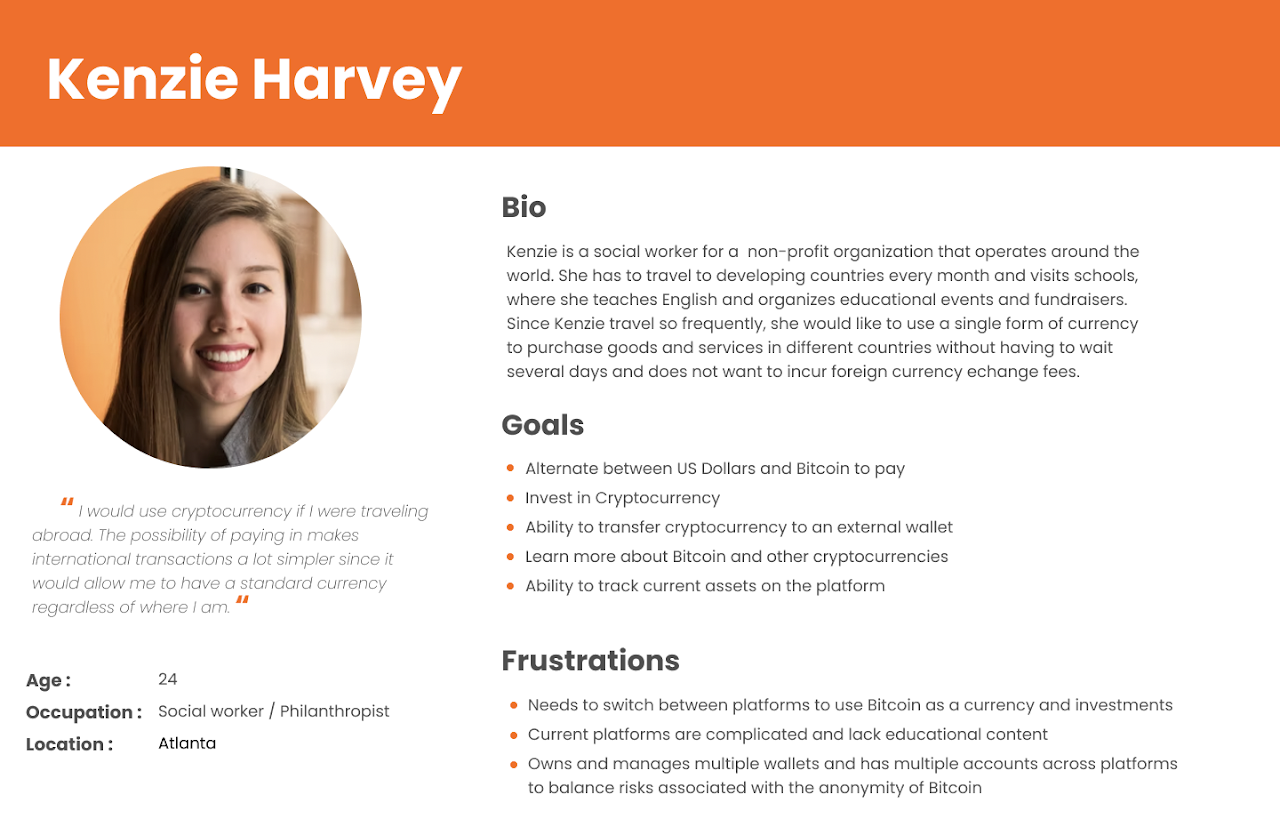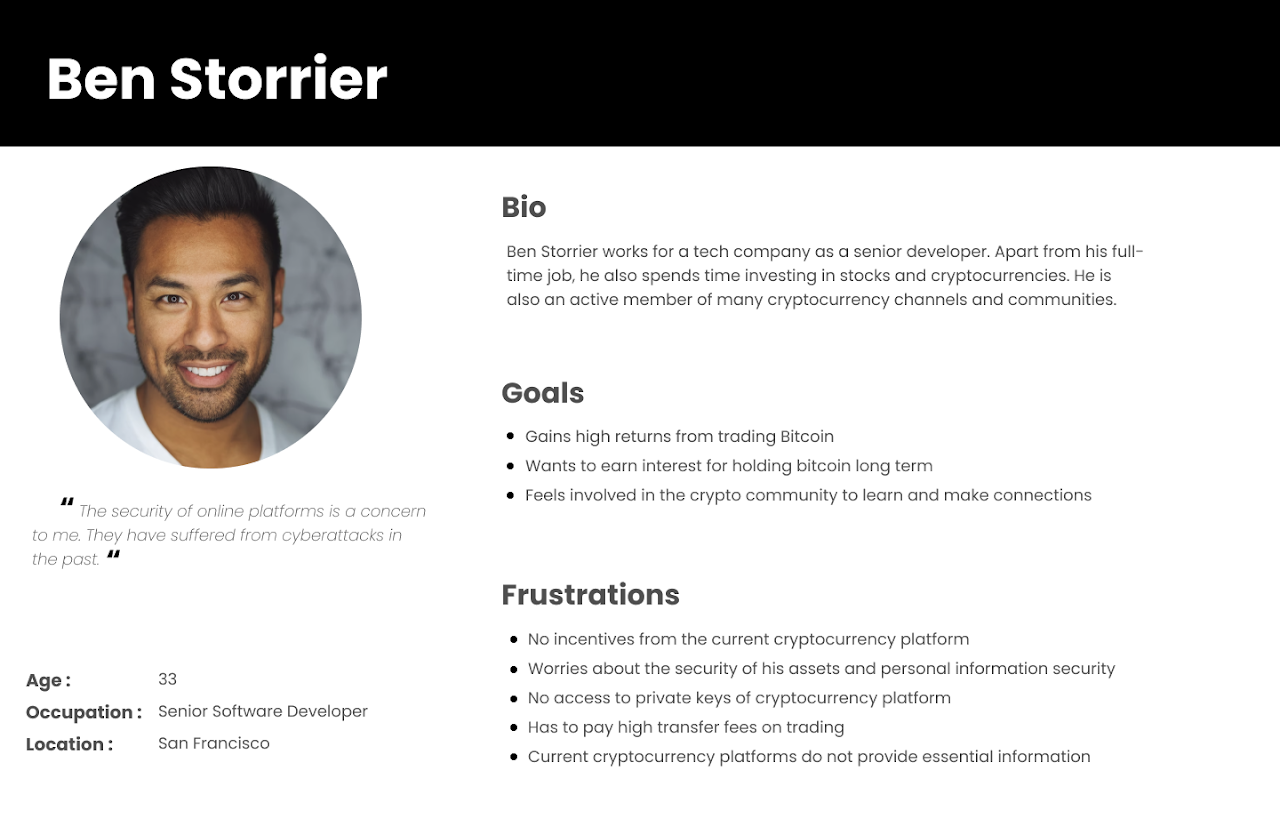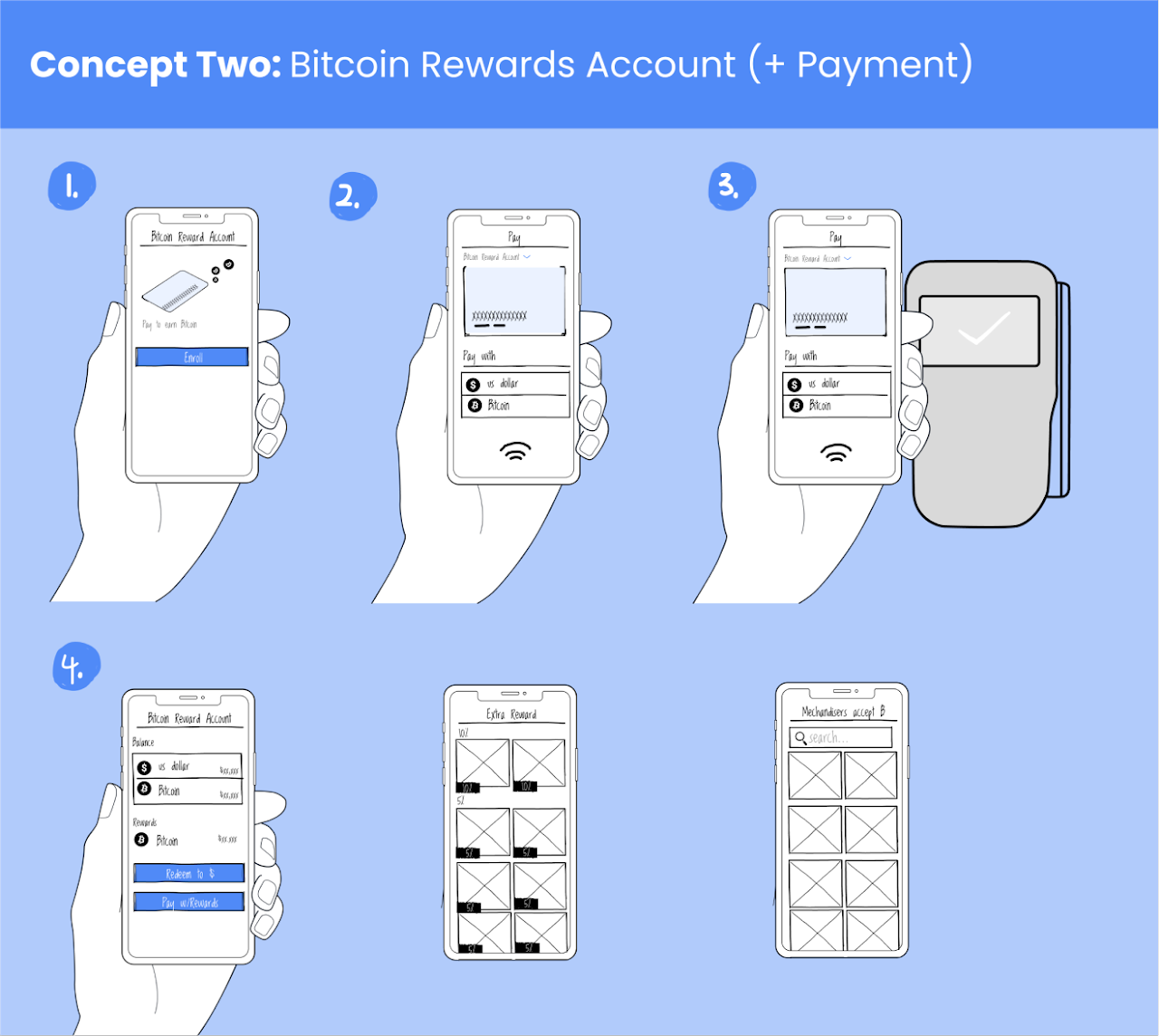📅 Year: 2021 Fall
⚡️ Contributions: Full-stack UX/UI Design, User Research, Task Analysis, Prototyping, Usability Testing, Visual Design
💻 Software: Figma, Miro
In four months, we worked with Fiserv, a FinTech company, and designed a mobile app that incorporates Bitcoin into traditional online banking platforms, making digital currencies transactions seamless and elegant.
01 | For What, You May Wonder
As you may have noticed, cryptocurrencies have become a popular investment for the average individual. We want to explore the possibilities of implementing Bitcoin with the traditional online banking platform by studying current cryptocurrency holders' perceptions of this emerging digital currency. We want to identify the wants and needs of these Bitcoin holders to understand their perceptions of this emerging digital currency and improve upon the existing online banking system, facilitating cryptocurrency transactions.
02 | User Research & Insights
We found that cryptocurrency investors are of a variety of different age groups, ethnicities, and locations but are primarily of high-income households. According to research conducted by the cryptocurrency exchange Gemini, the average household income for Bitcoin owners is $110k. So we chose to focus on holders with a household annual income over $75k because this group is representative of this population.
Research Methods
- Survey
We want to use surveys to validate two things. 1. Bitcoin owners have family incomes ranging from $75k to $200k. 2. Bitcoin is the most widely used cryptocurrency to date. Our survey data confirmed both. We used this data to narrow down our target audience.
- Interview
The surveys helped us narrow down our problem space and played a large role in generating the topics and questions for our interviews. We used the open-ended nature of interviews to get a big picture of the Bitcoin market and different perspectives.
🧐 Research Findings
- People typically hold multiple cryptocurrencies.
- Most people have not used Bitcoin as a payment method in the past.
- People worry about the security of the platforms they use.
- People enjoy constantly learning more about cryptocurrencies.
- Users heavily consider rewards and incentives on the cryptocurrency management platform.
- A strong community of cryptocurrency can foster understanding and facilitate networking.
- Experienced cryptocurrency holders like to hold their keys but worry about losing them.
💡 Design Implications from Findings
- People typically hold multiple cryptocurrencies.
- Most people have not used Bitcoin as a payment method in the past.
- People worry about the security of the platforms they use.
- People enjoy constantly learning more about cryptocurrencies.
- Users heavily consider rewards and incentives on the cryptocurrency management platform.
- A strong community of cryptocurrency can foster understanding and facilitate networking.
- Experienced cryptocurrency holders like to hold their keys but worry about losing them.
👦🏻 Personas


03 | ✍️ Sketches & Wireframes
"I have used Bitcoin as a payment method in the past, and I believe there is great potential for crypto to be a widely used currency in the market. " - User #3

"Owning coins, gaining an incentive, and low fees are important to me when I look for a crypto platform." -User #4

04 | Design 💅 (finally)




05 | Usability Testing
We conducted think-aloud usability testing. Alongside the user testing, we had two HCI professors - Dr. Bruce and Dr. Walker to provide heuristic evaluations feedback. I present our key findings below.
💪
- Strength #1: Design Consistency and Aesthetics
Our components and visual design are consistent throughout the entire flow. We created a visual design style guide before starting the actual high-fidelity prototype. Consistency in the system design reduces users learning curves as it is simplistic. - Strength #2: Visibility of System Status
Users understand where they are despite having many pages and functionalities. When interacting with the system, such as creating a new account, users get clear feedback on their progress and the result - Strength #3: Match Current Banking App Systems
Our system architecture matches the current trending mobile banking apps. It takes less to no effort for new users to navigate different pages.
🤡
- Weakness #1: External Account
Users were confused about whether they could make changes to their external accounts from the banking app. If it is read-only, what is the purpose of linking the accounts? - Weakness #2: Portfolio Return Alert
The "portfolio return alert" was confusing to most users. Most participants were not sure when the alert would be activated, or how they are activated. - Weakness #3: Bitcoin Account
Most users were unsure how to use the Bitcoin account. For instance, how could they make a transaction or purchase items? We need to put more specific information on this either before or after they created an account.
06 | Retrospective
In this process, I learned not to be arrogant with my design ideas but to allow the users' feedback to be provocative. Reflecting on users' nonverbal reactions/feedback is important for iterative design and to better the interview. When a user takes a long time to respond to an interview question, it might not be a clear question, or the interview isn't structured in a way such that it gives users a chance to refresh their memories.
On a broader scope, I would criticize our design process for missing the value of inclusion and equity. We focused solely on Bitcoin users, who are a group of people that have enough financial stability to make risky investments. This is confirmed by our interviewees' demographics - all were at least college educated and 90% male. In other words, this is not a value-sensitive design.
Unfortunately, I think this problem is prevalent in most design projects. Because we, students earning a master's degree in product design at Georgia Tech, are limited in our life experiences and our connections. People live in their bubbles, and we are a bubble of technology-prone, college-degree-earned, financially-sufficient people trying to design a product UI that attracts a similar crowd.
We could've explored more on those who don't own Bitcoin but want to learn about Blockchain, those that can't afford to make risky investments but wish our product help them find alternatives. Those are missing.


